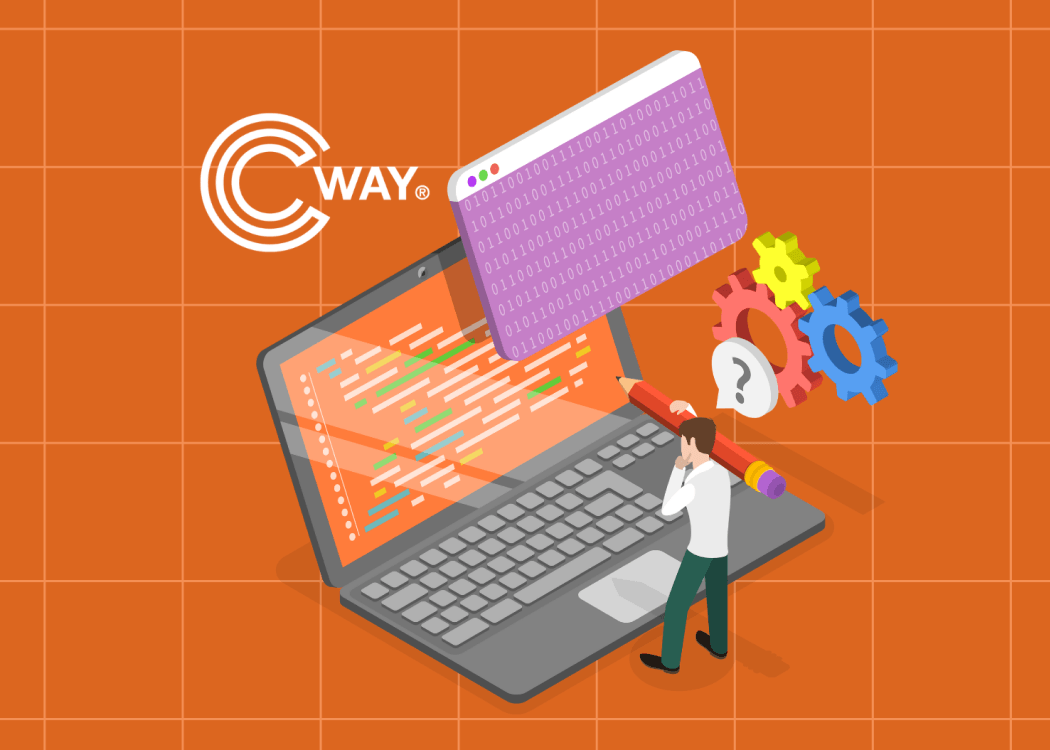How Cway software can transform your artwork management workflow
Creating exceptional designs is just the beginning—delivering them seamlessly is where the real challenge lies. In the FMCG and packaging industries,...
4 min read
Ekaterina Skalatskaia
:
2025-03-26 08:45
Brands must navigate an increasingly complex packaging process, from concept ideation to final production, ensuring compliance, consistency, and efficiency. This is where Cway® software comes in—revolutionizing artwork management and packaging workflows to help brands get to market faster without compromising quality.
The packaging creation workflow is a structured process that ensures packaging artwork is accurate, compliant, and market-ready. It involves multiple teams, approvals, and iterations before a product is ready for production. Efficient artwork management is key to reducing delays and errors.
Here’s a step-by-step breakdown of the packaging creation workflow and how Cway® software helps streamline the process:
The first step in the packaging creation workflow is briefing and concept development. At this stage, teams define the packaging requirements, brand positioning, and target audience, ensuring that the final product aligns with marketing and regulatory expectations.
🔹 Objective: Define the packaging requirements, brand positioning, and target audience.
🔹 Stakeholders: Brand managers, marketing, and design teams.
🔹 Key deliverables:
✅ How Cway® helps: Centralizes briefs, ensuring all stakeholders have access to updated requirements.
Once the packaging concept has been approved, the next critical step is designing the artwork that will be used in production. This phase is a balance between brand identity, regulatory compliance, and consumer appeal—ensuring that the final packaging is not only visually engaging but also meets industry requirements and printing specifications.
🔹 Objective: Develop visual packaging artwork, incorporating branding, regulatory, and marketing elements.
🔹 Stakeholders: Graphic designers, branding teams, legal and compliance teams.
🔹 Key deliverables:
✅ How Cway® helps:
Once the packaging artwork is created, it must go through a rigorous internal review and approval process. This step is essential to validate brand consistency, legal compliance, and print quality before moving forward with production. Without an efficient approval system, this phase can cause costly delays, errors, and compliance risks.
🔹 Objective: Validate the artwork for brand consistency, legal compliance, and print quality.
🔹 Stakeholders: Marketing, legal, regulatory, and quality assurance teams.
🔹 Key deliverables:
✅ How Cway® helps:
Once internal approvals are completed, the supplier and printer proofing phase ensures that the final artwork is print-ready and aligns with material specifications. This is a critical step to prevent errors in printing, color mismatches, and material inconsistencies that can lead to costly reprints and production delays.
🔹 Objective: Validate that the design is print-ready and aligned with material specifications.
🔹 Stakeholders: Print suppliers, packaging engineers, and production teams.
🔹 Key deliverables:
✅ How Cway® helps:
After the artwork has passed internal reviews, supplier proofing, and final approvals, it moves into mass production. This phase ensures that every packaging unit produced meets brand and quality standards, preventing defects that could impact customer perception, regulatory compliance, or supply chain efficiency.
🔹 Objective: Mass-produce packaging while ensuring consistency in quality.
🔹 Stakeholders: Production teams, quality control teams.
🔹 Key deliverables:
✅ How Cway® helps:
Managing final production and quality control manually can lead to costly mistakes, shipment delays, and product recalls. With Cway® software, brands can ensure that every packaging unit meets expectations, leading to faster, error-free production and a seamless market launch.
Once the final production and quality control phase is completed, the packaging is ready for distribution and market launch. This phase ensures that the packaging is delivered efficiently to suppliers, warehouses, and retail locations, aligning with branding and logistical requirements. Additionally, it sets the foundation for post-launch evaluations to improve future packaging iterations.
🔹 Objective: Mass-produce packaging while ensuring consistency in quality.
🔹 Stakeholders: Production teams, quality control teams.
🔹 Key deliverables:
✅ How Cway® helps:
Managing packaging distribution and market launches manually can lead to errors, inefficiencies, and missed opportunities for optimization. With Cway® software, brands can seamlessly transition from production to market launch, ensuring smooth distribution, compliance, and continuous improvement for long-term success.
Cway® software streamlines the entire packaging process, giving brands the speed, accuracy, and control they need to move from concept to shelf efficiently. By automating workflows, improving collaboration, and ensuring compliance, Cway® platform helps businesses meet market demands faster and with fewer errors.
With Cway® software, brands can:
✔ Speed up approvals with automated workflows.
✔ Prevent errors by centralizing artwork management.
✔ Maintain accuracy with a single approved master artwork version.
✔ Avoid costly reprints by catching mistakes early.
✔ Track progress in real time, reducing delays and miscommunication.
Ready to bring your packaging to market faster and more efficiently? Discover how Cway® can transform your artwork management today!
Packaging artwork management is the process of creating, reviewing, approving, and distributing packaging designs. It ensures that branding, compliance, and quality standards are met while minimizing errors and delays in production.
Brands often struggle with slow approval cycles, version control issues, compliance risks, printing errors, and extended time-to-market. Cway® eliminates these bottlenecks by providing a structured workflow.
Yes. Errors in packaging artwork can be expensive and may require entire print batches to be scrapped.
How Cway® software helps: Cway® maintains a single approved master version of artwork, preventing outdated or incorrect files from being used. This reduces the risk of printing mistakes and costly reworks.
To explore how Cway® software can transform your artwork management and packaging workflows, visit our website or contact our team for a demo

Creating exceptional designs is just the beginning—delivering them seamlessly is where the real challenge lies. In the FMCG and packaging industries,...

What’s the cost of a single mistake on your packaging artwork? Delayed launches? Fines for non-compliance? A hit to your brand’s reputation? These...

3 min read
FMCG (Fast-Moving Consumer Goods) companies often face challenges in managing product revision workflows due to the complexity and scale of their...